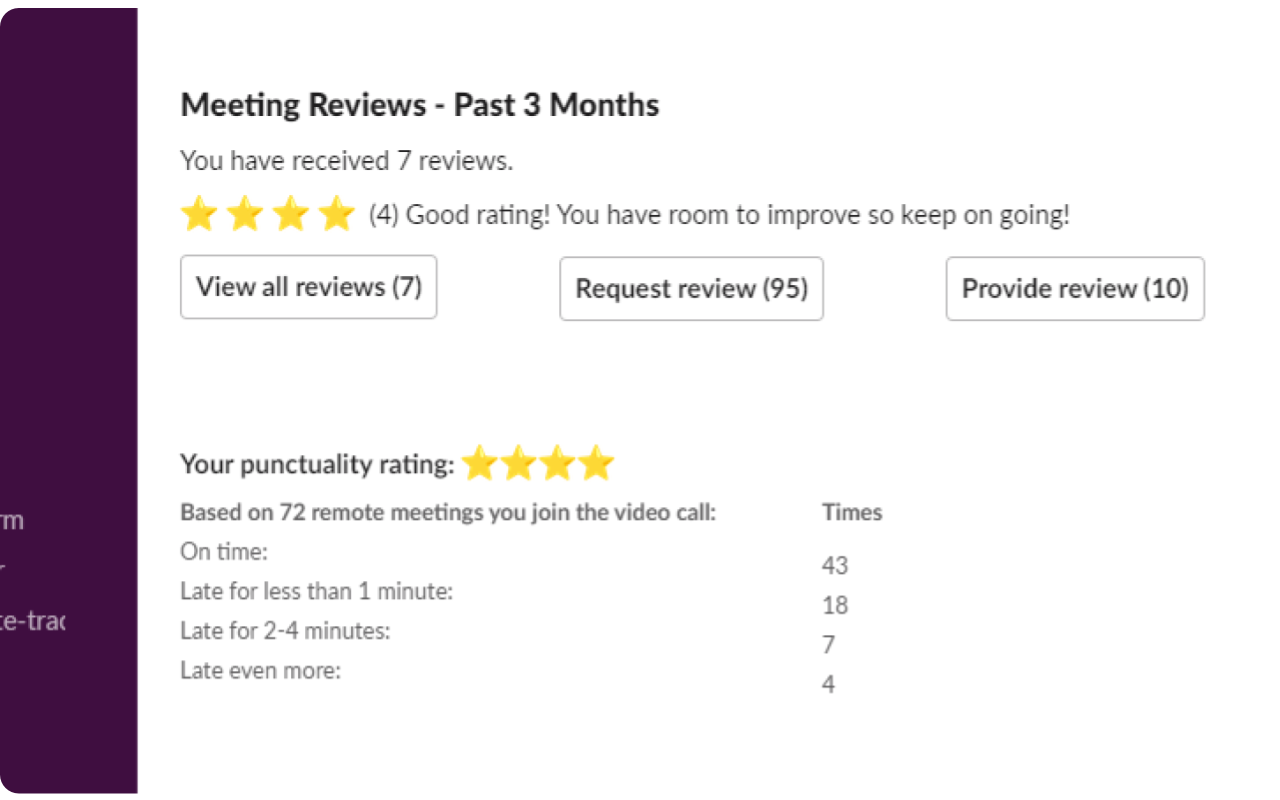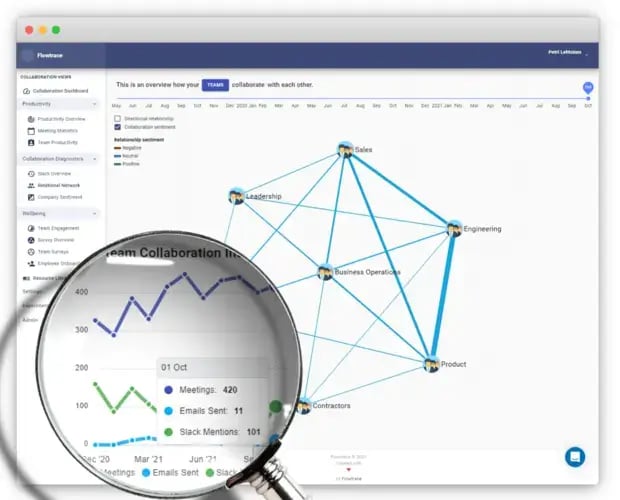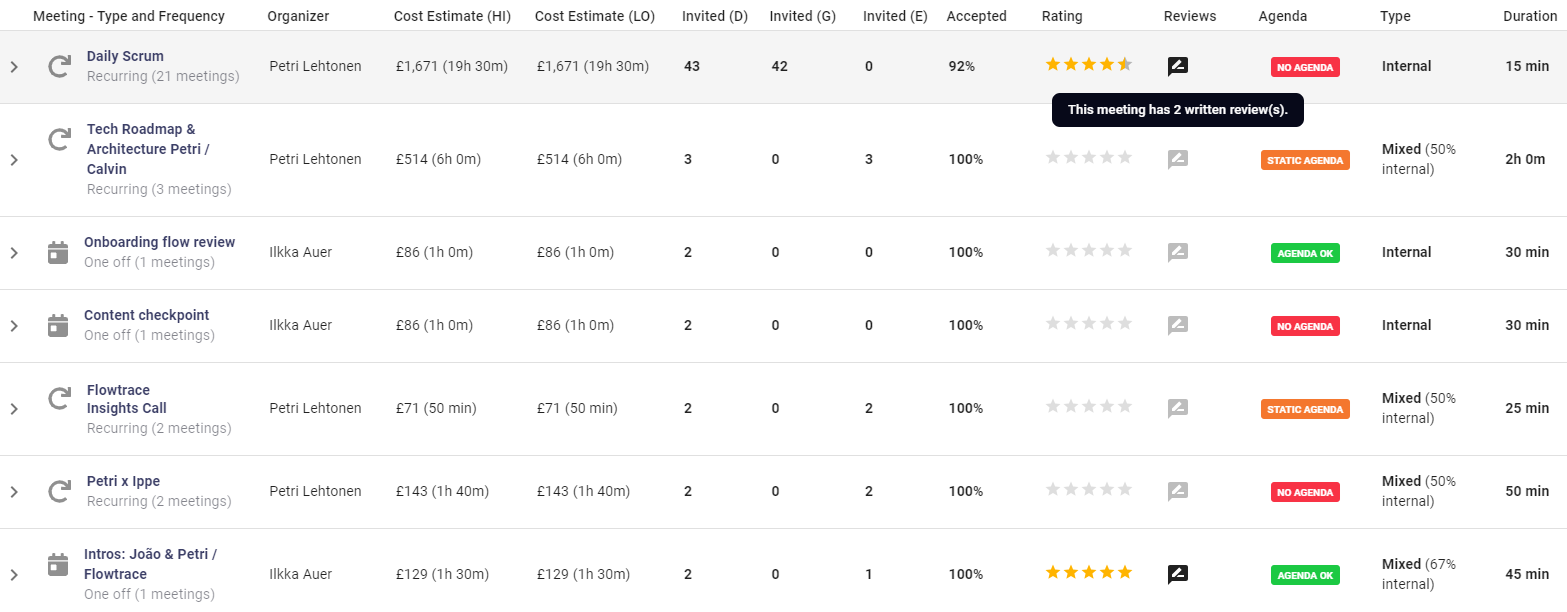5 Strategies for Reducing Engineering Process Cycle Time
Are you looking to optimize your process cycle time and drive business success? Our platform allows you to identify bottlenecks and inefficiencies.
Uncover the potential of Scrum metrics and cutting-edge tools to optimize engineering flow, streamline operations, and improve team collaboration.
In the realm of technology and engineering, the pace is swift, the work demanding, and the pressure to deliver consistently high-quality results unrelenting. Amidst this, one question continues to puzzle even the most experienced Scrum Masters: how can we truly optimize engineering flow to empower our teams to their full potential?
Today, we will explore the transformative potential of Scrum flow metrics. A seemingly simple concept that, when correctly utilized, can revolutionize your team's efficiency, streamline operations, and improve collaboration in ways you never thought possible. Are you ready to venture into this extraordinary world of metric-driven productivity? Let's dive in.
Scrum metrics: you've heard the term, and you're likely employing a handful of these metrics in your daily operations. But are you truly leveraging their full power to drive your engineering flow? Let's delve deeper.
At their core, Scrum metrics are much more than just numbers on a dashboard; they are a window into your team's performance, an invaluable tool that uncovers hidden patterns, exposes inefficiencies, and illuminates the pathway towards streamlined productivity.
Let's consider engineering cycle time, one of the fundamental Scrum metrics. It's a simple measure of the time it takes for a task to move from the beginning to the end of your workflow. But have you ever stopped to consider its broader implications? An extended cycle time could hint at bottlenecks hindering your team's progress, intricate tasks that may require additional resources, or perhaps an opportunity to refine your work processes for heightened efficiency.
And then there's the sprint burndown chart, another indispensable Scrum metric. On the surface, it may seem like a mere tracker of completed work. But in reality, it's a barometer for your team's health. Is your team consistently failing to meet sprint goals? It might be time to reassess your workload allocation, review your sprint planning strategy, or invest in additional training to boost your team's capabilities.
The potential of Scrum metrics are immense; they are like a compass in the agile world, guiding Scrum Masters towards a more streamlined, productive, and collaborative work environment. The question is: Are you ready to harness this potential to empower your team and optimize your engineering flow?
.webp?width=680&height=418&name=magnifyingglassproductivity-2%20(3).webp)
Stay with us as we navigate the choppy waters of common tech team challenges and explore how Scrum flow metrics, combined with the right tools, can steer you towards calmer seas and sunnier productivity horizons.
Now, we must acknowledge that even the most innovative teams face their fair share of challenges. Indeed, these hurdles are part and parcel of the dynamic tech world. However, it's crucial to recognize and understand them, not as a source of dismay, but as stepping stones on your journey to creating a high-performing, resilient team.
Let's start with meetings - the necessary evil that often turn out to be less-than-productive, draining, and a source for inefficiency. Meeting overload is a widespread phenomenon, with many tech teams entangled in a web of back-to-back meetings, leaving little room for deep, focused work. Does that scenario sound all too familiar? You're not alone.
And then there are the notorious inter-team collaboration issues. The beauty of the tech world lies in its interconnectedness, where developers, designers, and product managers come together to create digital marvels. However, when the threads of this network start working in silos, (separting people GitHub, Jira, Google Docs etc.) the very fabric of collaboration is at stake. A lack of sync in processes, coupled with insufficient communication, can quickly snowball into a hindrance to your team's progress and decline in team morale.

Visibility, or rather the lack thereof, is another formidable challenge. Remote working has brought countless benefits, from flexibility to increased accessibility, but it has also presented unique hurdles. When you cannot physically see what's happening, it can be easy for core processes to become obscured, details to slip through the cracks, and agile issues to go unnoticed. Are your team members feeling disconnected? Is vital information falling by the wayside?
This is where the data from Slack's State of Work 2023 report takes on stark significance. It reveals that 27% of executives rely on visibility and activity metrics to measure productivity. Moreover, 53% of desk workers feel pressured to respond to messages quickly, even if they come in after working hours, highlighting the increasingly blurred lines between work and personal life.

Furthermore, it's telling that 63% of respondents admitted to making an effort to keep their status active online, even if they're not working at that moment. This can be indicative of a 'digital presenteeism' culture, where the pressure to be seen as active can lead to unnecessary stress and potential burnout.
But don't let these challenges dishearten you. Every problem presents an opportunity for a solution. With the right strategies, tools, and mindset, these obstacles can be overcome, leading your team to reach new heights of productivity and collaboration. So, are you ready to explore these solutions and learn how to wield the power of scrum metrics and cutting-edge tools to conquer your team's challenges? Let's move forward.
The landscape of work is ever-evolving, and the solutions to today's challenges lie in embracing this change and harnessing the potential of innovative, cutting-edge tools. In our pursuit to optimize engineering flow and collaboration, these tools can be our greatest allies.
Let's consider a platform like Flowtrace - not with a sales mindset, but as an example of the type of technology reshaping how we approach productivity and collaboration in the workplace. Platforms like these delve into the heart of your operations, analyzing workplace calendars, meetings, productivity apps, and tools. The result? In-depth insights, metrics, and actionable recommendations to make work better.
Imagine being able to track the effectiveness of meetings, examine team collaboration trends, and gain insights into workday patterns, all through an integrated system linked to your everyday productivity tools like Google Workspace, Slack, or Zoom. Suddenly, tackling meeting overload becomes a tangible task. By identifying patterns, you can understand which meetings are necessary, which can be streamlined, and which meetings can be cut altogether.

Consider the ability to bridge the gap between different teams and break down silos. Analytics platforms like Flowtrace can highlight areas where communication is lacking and where collaboration can be improved. As a result, the platform becomes not just a tool, but a facilitator of dialogues - sparking conversations that might never have taken place otherwise, ultimately driving more effective inter-team collaboration.
And let's not forget about the issue of visibility. In the age of remote work, staying aware of core processes and maintaining a finger on the pulse of your team's dynamics can be challenging. With smart tools like Jira analytics, you can keep track of project statuses, employee engagement, and even subtle changes in work patterns - enabling managers to address any issues promptly and maintain a cohesive, engaged team.
Navigating the choppy waters of tech team challenges might seem daunting, but with the right tools at your disposal, you can chart the course towards smoother sailing. In our next chapter, we'll explore how we can apply these insights and harness the potential of technology to transform meeting culture and inter-team collaboration.
Having established that sophisticated tools can help optimize your engineering flow, let's dive into specifics. How can we employ Scrum metrics and technology to tackle the most prominent challenges and improve your team's performance and satisfaction?
The cornerstone of effective meetings is clarity and purpose. Start by implementing Scrum metrics like Time to First Response and Decisions per Meeting. Coupled with calendar analytics, you can determine if meetings are being conducted efficiently, or if they're merely consuming valuable work time.
Next, consider anonymous meeting feedback and ratings. They can provide valuable insights into how your team perceives meetings, giving you a chance to address unvoiced concerns. Additionally, punctuality metrics can help instill a culture of respect for everyone's time, leading to a smoother and more disciplined workflow.
Communication breakdown and the silo mentality are all too common in tech teams. Here, a tool like Flowtrace’s employee app could help bridge gaps by providing a platform for open communication. It can help expose areas where collaboration is lacking and offer insights to improve team effectiveness.

Metrics like cross-team collaboration rate and interactions per project can offer a deeper understanding of how your teams are working together. This could be a stepping stone towards cultivating a more transparent, collaborative culture.
Effective information flow is the lifeblood of successful tech teams. With advanced integrations into productivity tools, platforms like Flowtrace can help you maintain a consistent and up-to-date knowledge base, making it easier to keep everyone informed and engaged.
Metrics like document updates per week, or user activity on shared documents, can highlight gaps in knowledge sharing. Are some documents rarely updated? Is there a crucial piece of information that hasn’t been accessed by your team members? These insights can help you rectify information bottlenecks.
Finally, artificial intelligence holds immense potential in enhancing your team's productivity. As highlighted by Slack's State of Work 2023 report, desk workers who use AI are 90% more likely to report higher levels of productivity.
AI can offer personalized metrics and workday insights to every team member, helping them understand their own work patterns better. Furthermore, AI recommendations can help leadership teams identify areas of improvement and make informed decisions to optimize workflows.
Remember, it's not just about implementing metrics and tools; it's about fostering a culture of openness, transparency, and continuous improvement. In the next chapter, we'll explore the steps you can take to implement these changes and create a thriving work environment for your tech team.
The tech world is a bustling hive of innovation, collaboration, and challenges. As we've navigated through the landscape of scrum team challenges, it's clear that the key to resolving many of these issues lies in data and advanced analytics.
Meetings, once considered a necessary evil, can be transformed into effective platforms for decision-making with the right metrics and tools. With in-depth calendar analytics, you can make informed changes to your meeting culture, ensuring they serve their true purpose: facilitating collaboration and progress.

Silos, too, can be broken down. By harnessing the power of metrics like cross-team collaboration rate and interactions per project, you can foster an environment of open communication. This transparency not only strengthens team bonds but also enhances overall productivity.
In the era of remote work, maintaining visibility and ensuring information flows effectively is paramount. Platforms like Flowtrace, integrated with productivity tools, can keep you apprised of your team's dynamics, ensuring nothing slips through the cracks.
The potential of artificial intelligence in enhancing productivity cannot be overstated. As we embrace AI, we're not just adopting a new technology; we're fostering a culture of efficiency, personalized insights, and informed decision-making.
In our journey through scrum metrics and modern tools, we've seen how technology is reshaping the future of work. But the transformation doesn't end with the implementation of these tools and metrics. The real magic happens when these insights drive you to make lasting changes, fostering a culture of continuous learning and improvement.
In the end, the goal isn't just to create a more efficient work environment. It's about building a place where people can thrive, innovate, and find fulfillment. After all, isn't that what the tech world is all about?
Are you looking to optimize your process cycle time and drive business success? Our platform allows you to identify bottlenecks and inefficiencies.
We integrated GitHub analytics into out decision intelligence platform. Use us to reveal hidden cross-team dependencies and resolve bottlenecks.
Flowtrace integrates with JIRA to provide real-time performance insights. It offers a range of metrics, including cycle times, and meeting metrics.